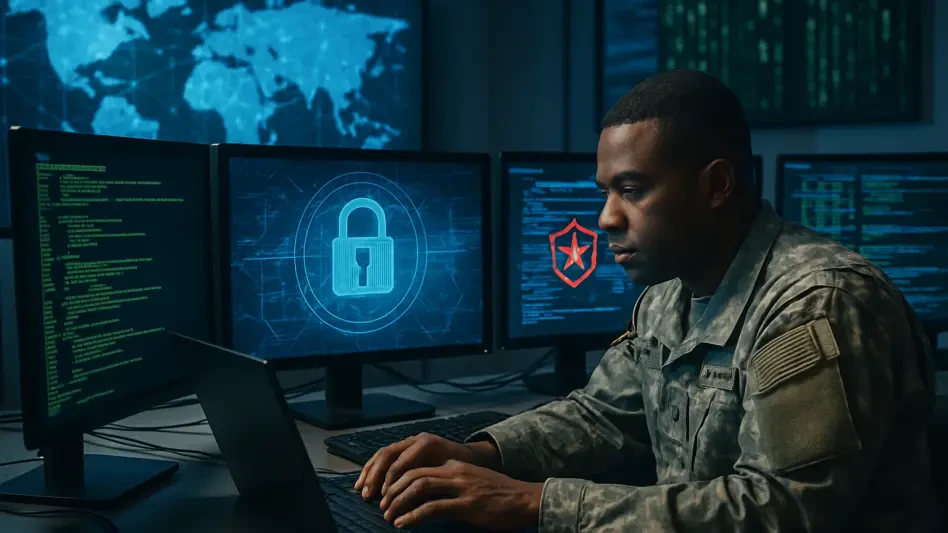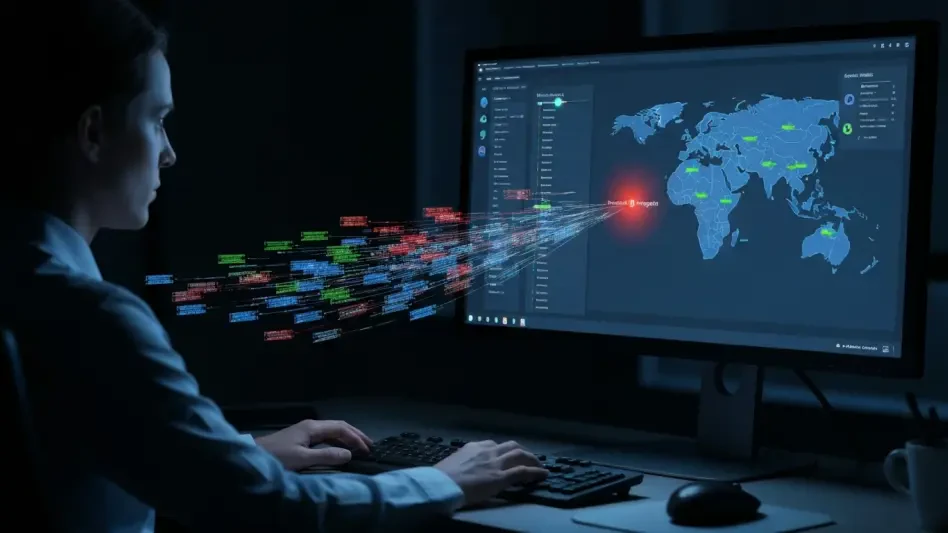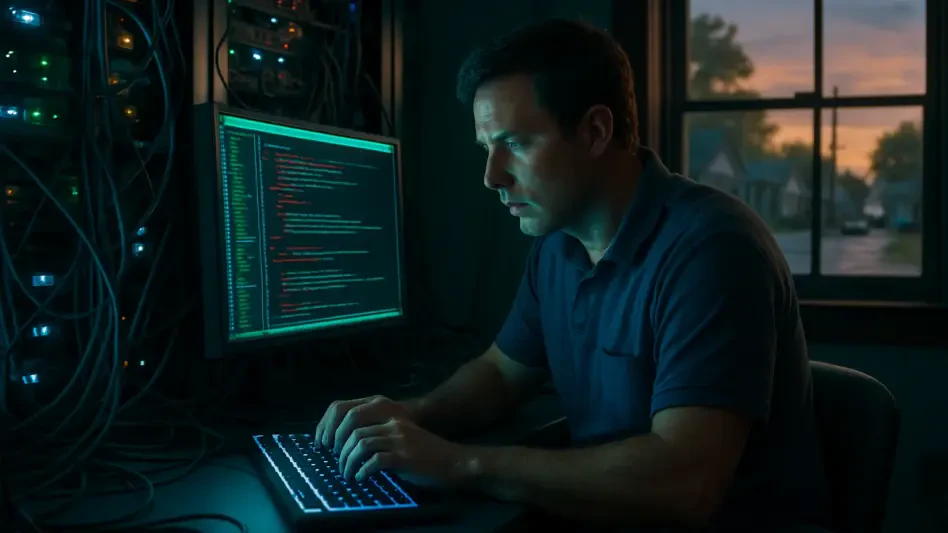In an era where digital warfare is as critical as physical combat, the U.S. Army is pushing the boundaries of military technology with its Next Generation Command and Control (NGC2) platform, a system designed to redefine how commanders process information and direct operations through agile, software-driven solutions. As a cornerstone of modernization efforts, NGC2 promises a data-centric approach to decision-making across diverse command levels, breaking away from the constraints of legacy systems with a fresh, innovative framework. However, this ambitious shift has encountered significant hurdles, particularly in cybersecurity, as early prototypes exposed vulnerabilities that could jeopardize both data integrity and mission success. The journey of NGC2 underscores a broader challenge in military tech development: ensuring robust security while racing to deliver cutting-edge capabilities to the field. This tension between speed and safety has sparked intense scrutiny, setting the stage for a deeper look into how these issues are being addressed.
Addressing Security Flaws in Early Prototypes
Uncovering Critical Weaknesses
The initial stages of NGC2 development revealed alarming cybersecurity gaps that threatened the platform’s viability for operational use. A detailed internal memo dated September 5, authored by Army Chief Information Officer Chief Technology Officer Gabriele Chiulli, described the early prototype as a “black box” lacking accountability and oversight. Key deficiencies included the absence of Role-Based Access Control (RBAC), which meant users could access all data and applications without restriction, directly violating the Pentagon’s zero trust security model. Additionally, unverified third-party codebases and inadequate data security practices heightened the risk of adversary infiltration and potential misuse of classified information. These flaws painted a stark picture of a system unprepared for the rigors of modern digital threats, raising urgent questions about the readiness of such a pivotal tool in the Army’s modernization arsenal and the processes guiding its creation.
Beyond the technical shortcomings, the memo highlighted a systemic issue of governance, pointing to a lack of clear ownership over the platform’s security framework. This gap in accountability compounded the risks, as there was no defined mechanism to ensure consistent monitoring or enforcement of security standards. Chiulli’s assessment warned of persistent, undetectable access by hostile entities, likening the deployment of such a flawed system to wielding a defective weapon on the battlefield. The critique underscored a critical oversight in prioritizing rapid development over foundational safeguards, a misstep that could have far-reaching consequences for operational integrity. Addressing these vulnerabilities became not just a technical necessity but a strategic imperative to protect national defense interests from emerging cyber threats in an increasingly contested digital landscape.
Lessons from Early Failures
The exposure of these vulnerabilities served as a wake-up call, emphasizing the inherent challenges of pioneering a system built from the ground up under tight timelines. The absence of established protocols for access control and code verification reflected a broader tension in military innovation: the drive to deploy transformative tools often outpaces the integration of essential security measures. This situation with NGC2 illustrates how even the most advanced systems can become liabilities if cybersecurity is treated as an afterthought rather than a core component from inception. The risks identified were not merely theoretical; they represented real threats to mission success, where a single breach could compromise sensitive data or disrupt command operations at critical moments. This early stumble highlighted the need for a cultural shift within development teams to prioritize security alongside functionality.
Moreover, the initial flaws in NGC2 pointed to the complexities of managing third-party contributions in military software ecosystems. Unverified codebases, often sourced from external vendors, introduced hidden vulnerabilities that standard testing protocols failed to catch. This issue was compounded by inadequate data hygiene practices, which left sensitive information exposed to potential exploitation. The memo’s stark warnings about adversary access underscored the stakes involved, as modern warfare increasingly hinges on the integrity of digital systems. Learning from these early missteps, it became evident that robust vetting processes and strict governance structures must underpin every stage of development. These lessons are shaping a more cautious approach to innovation, ensuring that future iterations of the platform are fortified against the evolving landscape of cyber threats.
Strategies for Mitigation and Progress
Rapid Response to Identified Risks
In the wake of the critical findings, the Army demonstrated remarkable agility in addressing the cybersecurity deficiencies within the NGC2 prototype. Within weeks of the internal memo’s circulation on September 5, officials such as Chief Information Officer Leonel Garciga and Lt. Gen. Jeth Rey, deputy chief of staff at the Army’s G-6, confirmed that the identified issues had been resolved. Streamlined cybersecurity processes enabled swift identification and mitigation of vulnerabilities, preventing any derailment of key development milestones. Lt. Gen. Rey framed this early detection and resolution as a positive outcome, illustrating the value of embedding security checks into the earliest phases of a project. This rapid turnaround transformed a potential crisis into a demonstration of proactive risk management, showcasing how structured responses can safeguard ambitious programs without sacrificing momentum.
Further reinforcing this success, the Army’s ability to maintain progress was evident in the platform’s performance at subsequent testing events. Just days after the memo, on September 15, the first Ivy Sting event—a series of sprint exercises designed to incrementally enhance capabilities—yielded promising results, indicating that security fixes were implemented seamlessly. This achievement highlighted the effectiveness of the mitigation strategies, which prioritized immediate action without compromising the iterative testing schedule. Garciga emphasized that these streamlined processes not only addressed the immediate threats but also set a precedent for handling future challenges. The quick pivot to a secure framework ensured that NGC2 remained on track to meet the Army’s modernization goals, proving that security and speed can coexist with the right mechanisms in place.
Iterative Development and Industry Partnerships
The ongoing refinement of NGC2 through an iterative development model has been instrumental in navigating the cybersecurity landscape. Still in the prototyping phase, the platform undergoes rigorous testing at various scales, from battalion-level trials at Project Convergence to upcoming division-level assessments with the 4th Infantry Division. Events like the Ivy Sting series provide structured opportunities for incremental improvements, allowing developers to address issues in real time based on feedback from live exercises. This approach acknowledges that perfection in early stages is unattainable, instead focusing on continuous enhancement to meet operational demands. By prioritizing adaptability, the Army ensures that each test cycle strengthens the system’s resilience against digital threats, paving the way for a more robust final product.
Collaboration with industry leaders further bolsters these efforts, bringing specialized expertise and resources to the table. Contracts awarded to companies like Anduril, with nearly $100 million for prototype development, and Lockheed Martin, for an integrated data layer, underscore the Army’s commitment to leveraging external innovation. These partnerships facilitate the integration of cutting-edge technologies while ensuring that security considerations remain central to the process. The synergy between military objectives and industry capabilities creates a dynamic environment where challenges like those initially faced by NGC2 can be tackled collaboratively. This model of shared responsibility not only accelerates development but also embeds diverse perspectives on cybersecurity, enhancing the platform’s defenses against a wide array of potential risks.
Future Implications and Modernization Goals
Balancing Speed with Robust Security
Described as a “once-in-a-generation” endeavor, the Army’s push to modernize through NGC2 reflects an urgent need to equip soldiers with state-of-the-art tools capable of meeting contemporary threats. However, the initial rush to deployment, as critiqued in Chiulli’s memo, exposed a critical fault line between the drive for speed and the necessity of comprehensive security. Army spokesperson Maj. Sean Minton articulated a proactive cybersecurity posture aimed at minimizing disruptions while ensuring operational readiness, a stance that seeks to harmonize these competing priorities. This balance remains a defining challenge, as the pressure to deliver transformative capabilities must be matched by rigorous safeguards to protect against digital vulnerabilities. The experience with NGC2 serves as a case study in navigating this delicate equilibrium, shaping policies for future military tech initiatives.
The broader context of this modernization effort reveals a strategic shift toward integrating security as a foundational element rather than a secondary concern. The early missteps with NGC2 underscored the pitfalls of accelerating deployment without adequate oversight, a lesson that is now informing a more measured approach. By embedding cybersecurity into every phase of development—from design to testing—the Army aims to prevent similar issues in upcoming projects. This shift is not merely reactive but represents a systemic evolution in how military technologies are conceptualized and rolled out. As digital warfare grows in prominence, ensuring that platforms like NGC2 can withstand sophisticated attacks becomes paramount, requiring a commitment to both innovation and vigilance that will define the next era of defense capabilities.
Evolving Cybersecurity in Military Tech
As military systems like NGC2 incorporate advanced software and intricate data architectures, they inevitably become prime targets for insider threats, external breaches, and other cyber risks. The increasing complexity of these technologies amplifies the need for robust security measures from the very start of development. Army officials consistently stress that early detection and resolution of vulnerabilities are essential to safeguarding mission-critical platforms, a principle vividly demonstrated in the handling of NGC2’s initial flaws. This focus on preemptive action highlights a growing recognition that cybersecurity is not a static requirement but a dynamic challenge requiring constant adaptation to emerging threats. The stakes are high, as any lapse could compromise not just a single system but the broader network of military operations.
Looking back, the response to NGC2’s early challenges marked a pivotal moment in reinforcing the importance of cybersecurity within military transformation. The mechanisms put in place, such as iterative testing and industry collaboration, proved effective in addressing immediate concerns while laying the groundwork for sustained improvement. These efforts reflected a broader commitment to evolving security practices in step with technological advancements. Moving forward, the insights gained from this experience should guide the integration of even stronger defenses in future platforms, ensuring that innovation does not come at the expense of safety. As military tech continues to advance, prioritizing cybersecurity will remain a cornerstone of national defense, with the lessons from NGC2 serving as a blueprint for balancing progress with protection.








